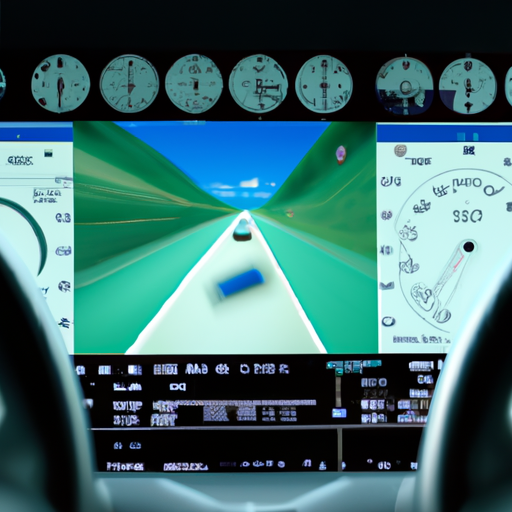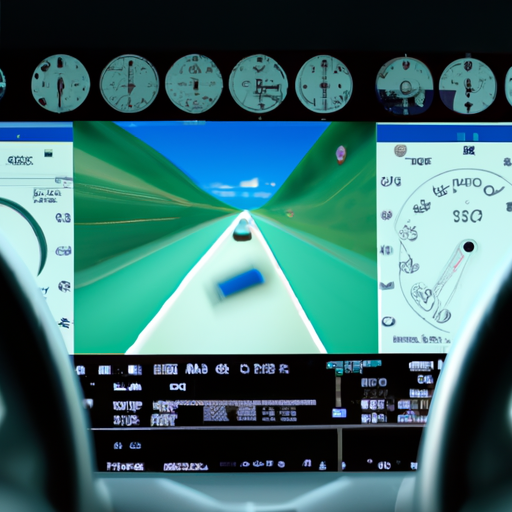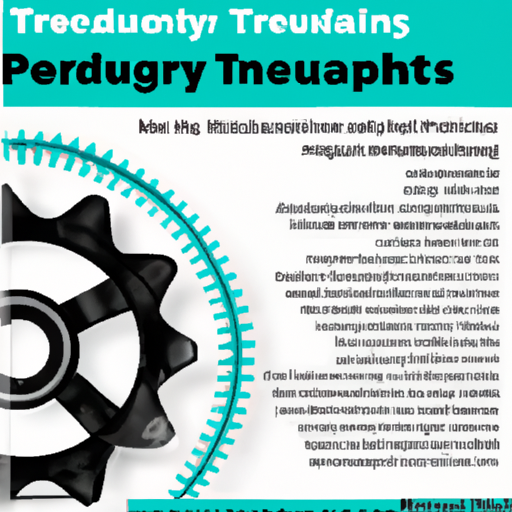Consumer Trends In Automotive Industry
So, you’re curious about what’s happening with consumer trends in the automotive industry, huh? Well, buckle up because I’ve got the inside scoop for you. From the rising popularity of electric vehicles to the growing demand for autonomous features, there’s a lot happening in the world of cars. In this article, we’ll take a closer look at how consumer preferences are shaping the automotive industry and what it means for the future of transportation. Get ready to rev your engines and discover the latest trends that are driving this ever-evolving industry.

Table of Contents
1. Electric Vehicles
Electric vehicles (EVs) have seen a significant rise in demand in recent years. As consumers become more conscious of the environmental impact of traditional gasoline-powered vehicles, there has been a growing interest in cleaner and more sustainable transportation options. The increasing demand for electric vehicles can be attributed to various factors including advancements in battery technology, government incentives and regulations, and the expansion of charging infrastructure.
1.1 Increasing demand for electric vehicles
The demand for electric vehicles has been steadily increasing as more people recognize the benefits of transitioning to electric-powered transportation. Electric vehicles offer lower or zero emissions, which contribute to reducing air pollution and combating climate change. As consumers become more environmentally conscious, they are increasingly seeking out vehicles that align with their values and have a minimal impact on the environment.
1.2 Advancements in battery technology
One of the key factors driving the adoption of electric vehicles is the advancements in battery technology. As battery technology continues to improve, the range and performance of electric vehicles are improving significantly. This addresses one of the main concerns consumers have had in the past – range anxiety. With the ability to travel longer distances and charge more quickly, electric vehicles are becoming a more viable option for everyday use.
1.3 Government incentives and regulations
Government incentives and regulations play a crucial role in promoting the adoption of electric vehicles. Many governments around the world are implementing policies to encourage consumers to switch to electric vehicles. These incentives can take the form of financial subsidies, tax credits, and preferential treatment such as priority access to certain lanes or parking spaces. Additionally, stricter emission regulations are putting pressure on automakers to produce more electric vehicles to meet environmental standards.
1.4 Expansion of charging infrastructure
The expansion of charging infrastructure is another key factor driving the growth of electric vehicles. As more charging stations are built in public spaces, workplaces, and residential areas, the concern about finding a charging point and the inconvenience of charging is diminishing. With a robust charging infrastructure in place, consumers are more confident in their ability to access charging facilities conveniently, making electric vehicles a more practical choice for everyday use.
2. Autonomous Driving
autonomous driving technology has been rapidly evolving in recent years, and it has the potential to transform the way we travel. While fully autonomous vehicles are still in the testing phase and not yet available for public use, advancements in autonomous driving technology are paving the way for a future where self-driving cars become a reality.
2.1 Evolution of autonomous driving technology
Autonomous driving technology has come a long way, with significant progress in areas such as sensors, artificial intelligence, and computing power. Companies are investing heavily in research and development to enhance the capabilities of autonomous vehicles, aiming to achieve higher levels of automation that allow for hands-free driving in various conditions.
2.2 Safety concerns and public acceptance
Safety concerns and public acceptance remain significant challenges for the widespread adoption of autonomous vehicles. While autonomous driving technology has the potential to reduce human errors and improve road safety, the transition to fully autonomous vehicles is met with skepticism and concerns regarding the reliability and safety of the technology. Building trust among consumers through rigorous testing and showcasing the safety benefits of autonomous driving will be crucial for wider public acceptance.
2.3 Impact on transportation and mobility
The advent of autonomous driving technology is expected to have a significant impact on transportation and mobility. With increased efficiency and reduced congestion, autonomous vehicles have the potential to revolutionize transportation systems, making them more sustainable and accessible. Autonomous driving can also improve mobility for those who are unable to drive, such as the elderly or individuals with disabilities, by providing them with a means of independent transportation.
2.4 Collaboration between automotive and technology companies
The development of autonomous driving technology requires collaboration between automotive companies and technology companies. Traditional automakers are partnering with technology giants to leverage their expertise in areas such as artificial intelligence and software development. This collaboration is vital for combining the automotive industry’s manufacturing capabilities with the cutting-edge technology required for autonomous driving systems.
3. Shared Mobility
Shared mobility services, such as ride-hailing and car-sharing, have gained tremendous popularity in recent years. These services provide consumers with convenient and cost-effective alternatives to traditional vehicle ownership, leading to a shift in consumer perception of transportation.
3.1 Rise of ride-hailing services
Ride-hailing services, such as Uber and Lyft, have disrupted the traditional taxi industry and transformed the way people travel. The convenience of booking a ride through a smartphone app and the affordability compared to traditional taxis have made ride-hailing services increasingly popular among consumers. This trend has also encouraged many individuals to forgo vehicle ownership, relying solely on ride-hailing services for their transportation needs.
3.2 Car-sharing and subscription-based models
Car-sharing services have also gained traction in urban areas, allowing individuals to rent vehicles for short periods of time. These services provide a flexible and cost-effective alternative to traditional car rentals, particularly for individuals who only need a vehicle occasionally or for short trips. Subscription-based models, where users pay a monthly fee for access to a fleet of vehicles, have also emerged as a popular option for those who want the benefits of car ownership without the long-term commitment.
3.3 Integration of mobility apps
The integration of mobility apps has made accessing shared mobility services even more convenient. Many ride-hailing and car-sharing services have developed user-friendly apps that allow consumers to book and track their rides or find available vehicles in real-time. The seamless integration of multiple mobility services within a single app provides consumers with a wider range of options and simplifies the process of selecting and booking transportation.
3.4 Shift in consumer perception of vehicle ownership
The rise of shared mobility has led to a shift in consumer perception of vehicle ownership. With the availability of convenient and affordable alternatives, many consumers, particularly those living in urban areas, are reevaluating the need for owning a personal vehicle. Instead of the traditional model of individually owning a car, consumers are embracing the idea of accessing transportation on-demand, considering vehicles as a service rather than a possession.

4. Connected Cars
Connected cars, enabled by the integration of internet of things (IoT) technology, are transforming the automotive industry by enhancing vehicle connectivity, communication, and functionality.
4.1 Internet of Things (IoT) integration in vehicles
The integration of the internet of things (IoT) technology in vehicles allows for seamless connectivity and communication with other devices and systems. This connectivity enables a range of features, such as real-time traffic updates, remote vehicle monitoring, and access to entertainment and navigation services. By leveraging IoT technology, vehicles can become part of a larger digital ecosystem, providing users with a connected and personalized experience.
4.2 Enhancements in vehicle connectivity and communication
Connected cars are equipped with advanced communication systems that enable vehicle-to-vehicle (V2V) and vehicle-to-infrastructure (V2I) communication. This communication allows vehicles to exchange important information, such as traffic conditions and hazards, enhancing overall road safety and efficiency. Moreover, connected cars can communicate with other smart devices, such as smartphones and home automation systems, enabling seamless integration and enhanced convenience for users.
4.3 Data collection and analysis
Connected cars generate vast amounts of data, ranging from vehicle performance and diagnostics to user preferences and behavior. Automotive companies can leverage this data to gain valuable insights into user behavior, driving patterns, and vehicle performance. By analyzing this data, automakers can improve their products and services, tailor them to individual user needs, and develop data-driven features and enhancements.
4.4 Cybersecurity and privacy concerns
With increased connectivity comes the need for robust cybersecurity measures to protect connected vehicles from cyber threats. As vehicles become more connected and reliant on software systems, they also become vulnerable to hacking and unauthorized access. Ensuring the security and privacy of connected cars is crucial to prevent potential risks and breaches, requiring continuous updates and improvements in security protocols.
5. Digital Retailing
Digital retailing in the automotive industry has been on the rise, allowing consumers to research, customize, and purchase vehicles online. This trend offers convenience and flexibility to consumers, transforming the traditional car buying process.
5.1 Online car buying platforms
The advent of online car buying platforms has revolutionized the way consumers shop for vehicles. These platforms allow consumers to browse and compare vehicles, access detailed information, and even customize their desired specifications. By eliminating the need to physically visit multiple dealerships, online car buying platforms streamline the research and decision-making process, empowering consumers with more control over their purchasing journey.
5.2 Virtual showrooms and test drives
Virtual showrooms and test drives offer consumers a unique opportunity to explore vehicles without leaving their homes. Automotive companies are investing in virtual reality (VR) and augmented reality (AR) technologies to provide immersive and interactive experiences that closely simulate visiting a physical showroom. Virtual test drives, enabled by these technologies, allow consumers to experience the performance and features of a vehicle virtually, helping them make more informed purchasing decisions.
5.3 Personalized customer experiences
Digital retailing enables personalized customer experiences by leveraging customer data and preferences. With the ability to collect and analyze consumer data, automotive companies can tailor their offerings to individual customer needs, providing personalized recommendations and offers. This personalization enhances the overall customer experience and fosters customer loyalty.
5.4 Integration of online and offline sales channels
The integration of online and offline sales channels is crucial in the digital retailing landscape. Consumers often engage in a multi-channel approach when making purchasing decisions, combining online research with physical dealership visits. Automotive companies need to ensure a seamless and integrated experience across all channels, allowing consumers to effortlessly transition from online research to offline interactions.
6. Sustainable and Eco-friendly Solutions
The automotive industry is experiencing a growing demand for sustainable and eco-friendly solutions as consumers become increasingly conscious of their environmental footprint. This trend is driving the adoption of fuel-efficient vehicles, hybrid and plug-in hybrid models, and the use of renewable energy sources in manufacturing processes.
6.1 Increasing demand for fuel-efficient vehicles
The rising cost of fuel and growing concern for the environment have led to a higher demand for fuel-efficient vehicles. Consumers are seeking vehicles that offer better mileage and lower fuel consumption to reduce their ecological impact and save on fuel costs. Automakers are responding to this demand by integrating advanced technologies, lightweight materials, and aerodynamic designs to improve the fuel efficiency of their vehicles.
6.2 Rising popularity of hybrid and plug-in hybrid models
Hybrid and plug-in hybrid models have gained popularity as a bridge between traditional gasoline-powered vehicles and fully electric vehicles. These vehicles combine an internal combustion engine with an electric motor, allowing for reduced fuel consumption and lower emissions. The availability of charging infrastructure and the extended range provided by hybrid models address concerns regarding range anxiety, making them a practical option for consumers transitioning to greener transportation.
6.3 Adoption of renewable energy sources in manufacturing processes
To reduce their environmental impact, automotive companies are adopting renewable energy sources in their manufacturing processes. Solar and wind energy, among others, are being utilized to power production facilities, reducing reliance on fossil fuels and minimizing carbon emissions. This shift towards renewable energy not only aligns with consumer expectations for sustainable practices but also contributes to creating a greener and more sustainable industry.
6.4 Eco-consciousness influencing purchasing decisions
Eco-consciousness is increasingly influencing consumers’ purchasing decisions in the automotive industry. Consumers are considering a vehicle’s environmental impact, including its emissions, energy efficiency, and sustainability practices, when making their purchasing decisions. Automotive companies that prioritize sustainability and offer eco-friendly options are better positioned to attract and retain environmentally-conscious consumers.
7. Personalization and Customization
Consumers today have a growing desire for unique and personalized vehicles that reflect their individuality and lifestyle. Technological advancements have enabled automotive companies to offer a wide range of customization options, creating an opportunity for personalization to become a competitive advantage.
7.1 Growing desire for unique and personalized vehicles
The desire for unique and personalized vehicles is driven by consumers’ need for self-expression. Many consumers view their vehicles as an extension of their identity and seek customization options to make their vehicles stand out from the crowd. This trend has fueled the demand for personalized features, colors, and accessories that allow consumers to create a vehicle tailored to their preferences.
7.2 Technological advancements enabling customization options
Technological advancements have greatly expanded the range of customization options available to consumers. From interior features to exterior designs, consumers can now choose from a variety of materials, colors, trims, and accessory packages to create a vehicle that reflects their personal style. Advanced manufacturing techniques, such as 3D printing, have also made it easier and more cost-effective for automotive companies to offer customization options.
7.3 Personalized vehicle ownership experiences
Personalization goes beyond the physical aspect of the vehicle. Automotive companies are leveraging technology to provide personalized ownership experiences. Features such as personalized digital interfaces, voice assistants, and user profiles enable consumers to customize their driving experiences to their preferences. This personalized approach enhances customer satisfaction and fosters long-term loyalty.
7.4 Customization as a competitive advantage
The ability to offer customization options has become a competitive advantage for automotive companies. Consumers are increasingly seeking out brands that provide a wide range of customization choices, as it allows them to create a vehicle that aligns with their unique needs and preferences. Automotive companies that can accommodate these demands and offer flexible customization options are better positioned to attract and retain customers in an increasingly competitive market.
8. Safety and Advanced Driver Assistance Systems
Safety remains a top priority for consumers when it comes to choosing a vehicle. Automotive companies are continuously integrating advanced driver assistance systems (ADAS) and safety features to improve road safety and provide a safer driving experience.
8.1 Integration of advanced safety features
Modern vehicles are equipped with advanced safety features to enhance driver and passenger safety. These features include lane departure warning, blind-spot detection, forward collision warning, and automatic emergency braking. By integrating these features, automotive companies aim to reduce the risk of accidents and minimize the severity of potential collisions.
8.2 Autonomous emergency braking (AEB) systems
Autonomous emergency braking (AEB) systems play a crucial role in preventing or mitigating accidents. These systems use sensors to monitor the road ahead and automatically apply the brakes in emergency situations when a collision is imminent. The integration of AEB systems has demonstrated significant effectiveness in reducing rear-end collisions and is becoming increasingly standard in new vehicles.
8.3 Adaptive cruise control and lane-keeping assist
Adaptive cruise control (ACC) and lane-keeping assist systems are designed to improve driver comfort and safety on the road. ACC uses sensors to maintain a safe following distance from the vehicle ahead, adjusting the vehicle’s speed accordingly. Lane-keeping assist systems help drivers stay within their lanes by providing gentle steering interventions if the vehicle starts to drift out of its lane. These systems enhance driver confidence and reduce the likelihood of accidents caused by driver inattention or fatigue.
8.4 Impact on insurance costs and regulations
The integration of advanced safety features and driver assistance systems can have an impact on insurance costs and regulations. Insurance companies may offer discounts or lower premiums for vehicles equipped with these safety features, as they contribute to reducing the risk of accidents and potential insurance claims. Additionally, governments may introduce regulations mandating the inclusion of certain safety features in new vehicles to improve overall road safety.
9. Shift in Customer Expectations
In today’s digital age, customer expectations in the automotive industry are evolving. Consumers now demand seamless digital experiences, convenience, and heightened levels of customer service. Automakers must adapt to these changing expectations to thrive in a competitive market.
9.1 Demand for seamless digital experiences
Consumers expect a seamless digital experience throughout their entire journey, from researching and customizing a vehicle to scheduling service appointments. The availability of user-friendly websites, mobile apps, and online support channels is essential for automotive companies to meet these expectations and provide a frictionless digital experience.
9.2 Focus on convenience and time-saving
Convenience and time-saving have become critical factors in consumer decision-making. Consumers expect automotive companies to streamline processes such as vehicle purchasing, service appointments, and maintenance. Efforts to reduce paperwork, enable online transactions, and provide pick-up and drop-off services are highly valued by consumers seeking convenience and efficiency.
9.3 Heightened expectations for customer service
Customer service has become a key differentiator in the automotive industry. Consumers expect prompt and personalized customer service throughout their ownership experience, including responsive communication channels, knowledgeable support staff, and efficient problem resolution. Building strong customer relationships and delivering exceptional service are crucial for retaining customers and fostering brand loyalty.
9.4 Influence of social media and online reviews
Social media and online reviews have a significant influence on consumer purchasing decisions. Consumers often turn to social media platforms and online review sites to gather insights, read about others’ experiences, and make informed decisions. Positive online presence, engaging social media content, and proactive reputation management are essential for automotive companies to build trust and attract new customers.
10. Influences of COVID-19
The COVID-19 pandemic has had a profound impact on the automotive industry, shaping consumer behavior, disrupting supply chains, and accelerating digital transformation.
10.1 Changes in car-buying behavior
The COVID-19 pandemic has led to changes in car-buying behavior. Many consumers are now prioritizing personal transportation over public transportation to minimize the risk of exposure to the virus. As a result, there has been an increased demand for private vehicles, particularly in suburban and rural areas. Consumers are also more inclined to choose contactless options, such as online research, virtual showrooms, and home test drives, to minimize physical interactions during the purchasing process.
10.2 Impact on supply chain and production
The pandemic has disrupted global supply chains, leading to production delays and shortages of critical components. The closure of manufacturing facilities and restrictions on international trade have affected automakers’ ability to produce and deliver vehicles. Automotive companies are adapting by implementing safety protocols, diversifying suppliers, and exploring localized production to mitigate the impact on supply chain disruptions.
10.3 Shift towards remote and virtual interactions
In response to social distancing measures and lockdowns, automotive companies and dealerships have increasingly shifted towards remote and virtual interactions. Remote work, online sales consultations, and virtual vehicle tours have become the norm as companies strive to meet customer needs while adhering to health and safety guidelines. This shift towards remote and virtual interactions has accelerated the digital transformation of the automotive industry.
10.4 Acceleration of digital transformation
The COVID-19 pandemic has accelerated the digital transformation of the automotive industry. Automotive companies are investing in digital technologies and online platforms to enhance the customer experience and improve operational efficiency. From online sales platforms to remote diagnostics and digital service appointments, the industry is embracing technology to adapt to the changing landscape and cater to evolving consumer needs.
As consumer trends continue to shape the automotive industry, it is imperative for automotive companies to remain agile and responsive to changing customer expectations, technological advancements, and societal shifts. By recognizing and embracing these trends, automotive companies can stay ahead of the curve and deliver on the evolving demands of consumers.





